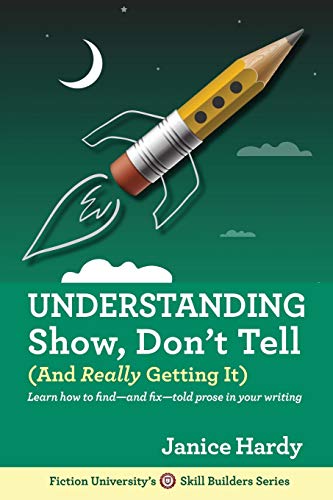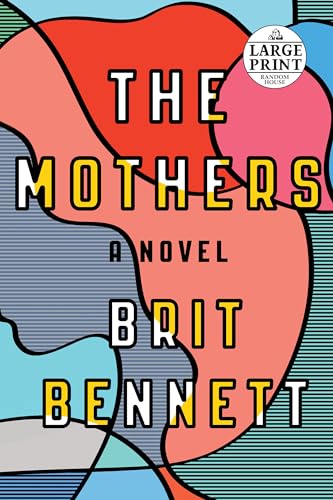10 Best 「novel writing」 Books of 2025| Books Explorer
- The Hero with a Thousand Faces (The Collected Works of Joseph Campbell)
- The Linchpin Writer: Crafting Your Novel's Key Moments
- Understanding Show, Don't Tell: And Really Getting It
- Writing Fiction Step by Step
- Telling True Stories: A Nonfiction Writers' Guide from the Nieman Foundation at Harvard University
- The Emotion Thesaurus: A Writer's Guide to Character Expression
- Exposure
- The Mothers: A Novel
- So Sad Today: Personal Essays
- Ink: Eight Rules To A Better Book
In every novel there are pivotal places that can make or break a book. Write them well, and you’ll have your readers begging for a sequel. Write them poorly, and your book will get scathing reviews and sell only a handful of copies. These pivotal places are “linchpin moments,” and in this book you’ll learn how to nail these moments.\\nBased on real advice from editing hundreds of novels, John Matthew Fox guides writers through the process of creating a novel that soars in the reader’s imagination. After reading this book, you’ll be a better storyteller, a better self-editor, and a better writer.\\nIn this book you’ll learn how to: Flood your readers with strong emotions Create memorable beginnings and endings Describe characters for the first time Make readers swoon in romantic scenes Kill off characters (without enraging your readers) Harness the element of surprise
Do you struggle with show, don't tell? You don't have to. Award-winning author Janice Hardy (and founder of the popular writing site, Fiction University) takes you deep into one of the most frustrating aspects of writing--showing, and not telling. She'll help you understand what show, don't tell means, teach you how to spot told prose in your writing, and reveal why common advice on how to fix it doesn't always work. With in-depth analysis, Understanding Show, Don't Tell (And Really Getting It) looks at what affects told prose and when telling is the right thing to do. It also explores aspects of writing that aren’t technically telling, but are connected to told prose and can make prose feel told, such as infodumps, description, and backstory. Her easy-to-understand examples will show you clear before and after text and demonstrate how telling words change the prose. You'll learn how to find the right balance between description, narrative, and internalization for the strongest impact. These examples will also demonstrate why showing the wrong details can sound just as dull as telling. This book will help you: \nUnderstand when to tell and when to show Spot common red flag words often found in told prose Learn why one single rule doesn't apply to all books Determine how much telling is acceptable in your writing Fix stale or flat prose holding your writing back \nUnderstanding Show, Don't Tell (And Really Getting It) is more than just advice on what to do and what not to do—it’s a down and dirty examination and analysis of how show, don’t tell works, so you can adapt the “rules” to whatever style or genre you’re writing. By the end of this book, you’ll have a solid understanding of show, don’t tell and the ability to use it without fear or frustration.
Writing Fiction Step by Step gives you more than 200 exercises that will sharpen your writing skills while helping you develop complete short stories, even novels.In this sequel to his very popular Fiction Writer's Workshop, Whiting Award-winning author Josip Novakovich shows you that writing fiction is about making connections–between character and plot, setting and conflict, memory and imagination. You'll make these connections by linking the exercises. A character invented in chapter two can appear in a scene outlined in chapter eight and can speak in a voice developed in chapter ten.Embark on a unique writing journey and learn step by step how to craft fiction that captivates readers.
Interested in journalism and creative writing and want to write a book? Read inspiring stories and practical advice from America’s most respected journalists.The country’s most prominent journalists and nonfiction authors gather each year at Harvard’s Nieman Conference on Narrative Journalism. Telling True Stories presents their best advice—covering everything from finding a good topic, to structuring narrative stories, to writing and selling your first book. More than fifty well-known writers offer their most powerful tips, including:• Tom Wolfe on the emotional core of the story• Gay Talese on writing about private lives• Malcolm Gladwell on the limits of profiles• Nora Ephron on narrative writing and screenwriters• Alma Guillermoprieto on telling the story and telling the truth• Dozens of Pulitzer Prize–winning journalists from the Atlantic Monthly, New Yorker, New York Times, Los Angeles Times, Washington Post and more . . .The essays contain important counsel for new and career journalists, as well as for freelance writers, radio producers, and memoirists. Packed with refreshingly candid and insightful recommendations, Telling True Stories will show anyone fascinated by the art of writing nonfiction how to bring people, scenes, and ideas to life on the page.
One of the biggest problem areas for writers is conveying a character's emotions to the reader in a unique, compelling way. This book comes to the rescue by highlighting 75 emotions and listing the possible body language cues, thoughts, and visceral responses for each. Using its easy-to-navigate list format, readers can draw inspiration from character cues that range in intensity to match any emotional moment. The Emotion Thesaurus also tackles common emotion-related writing problems and provides methods to overcome them. This writing tool encourages writers to show, not tell emotion and is a creative brainstorming resource for any fiction project.
An essay on the anxiety epidemic, autofiction and internet feminismAfter the release of Sympathy, her debut novel which explores surveillance and identity in the internet age, Olivia Sudjic found herself under the microscope. Trapped in an anxious spiral of self-doubt, she became alienated from herself and her work. Blaming her own mental health masked a wider problem that still persists: the tendency for writing by women, whether fiction or personal testimony, to be invalidated on the grounds of sex.Drawing on Sudjic's experience of anxiety – as well as the work of Elena Ferrante, Maggie Nelson, Jenny Offill, Rachel Cusk and others – Exposure examines the damaging assumptions that attend female artists, indeed any woman who risks Exposure,, as well as the strategies by which one might escape them.
NEW YORK TIMES BESTSELLER“Bittersweet, sexy, morally fraught.” –The New York Times Book Review"Fantastic… a book that feels alive on the page." –The Washington PostFrom the New York-Times bestselling author of The Vanishing Half, the beloved novel about young love and a big secret in a small community.Set within a contemporary black community in Southern California, Brit Bennett's mesmerizing first novel is an emotionally perceptive story about community, love, and ambition. It begins with a secret."All good secrets have a taste before you tell them, and if we'd taken a moment to swish this one around our mouths, we might have noticed the sourness of an unripe secret, plucked too soon, stolen and passed around before its season."It is the last season of high school life for Nadia Turner, a rebellious, grief-stricken, seventeen-year-old beauty. Mourning her own mother's recent suicide, she takes up with the local pastor's son. Luke Sheppard is twenty-one, a former football star whose injury has reduced him to waiting tables at a diner. They are young; it's not serious. But the pregnancy that results from this teen romance—and the subsequent cover-up—will have an impact that goes far beyond their youth. As Nadia hides her secret from everyone, including Aubrey, her God-fearing best friend, the years move quickly. Soon, Nadia, Luke, and Aubrey are full-fledged adults and still living in debt to the choices they made that one seaside summer, caught in a love triangle they must carefully maneuver, and dogged by the constant, nagging question: What if they had chosen differently? The possibilities of the road not taken are a relentless haunt.In entrancing, lyrical prose, The Mothers asks whether a "what if" can be more powerful than an experience itself. If, as time passes, we must always live in servitude to the decisions of our younger selves, to the communities that have parented us, and to the decisions we make that shape our lives forever.
From acclaimed poet and creator of the popular twitter account @SoSadToday comes the darkly funny and brutally honest collection of essays that Roxane Gay called "sad and uncomfortable and their own kind of gorgeous."Melissa Broder always struggled with anxiety. In the fall of 2012, she went through a harrowing cycle of panic attacks and dread that wouldn't abate for months. So she began @sosadtoday, an anonymous Twitter feed that allowed her to express her darkest feelings, and which quickly gained a dedicated following. In So Sad Today, Broder delves deeper into the existential themes she explores on Twitter, grappling with sex, death, love low self-esteem, addiction, and the drama of waiting for the universe to text you back.With insights as sharp as her humor, Broder explores--in prose that is both ballsy and beautiful, aggressively colloquial and achingly poetic--questions most of us are afraid to even acknowledge, let alone answer, in order to discover what it really means to be a person in this modern world.
Over the years of writing on my own, attending workshops, and sitting through lectures, I found that nothing beats good old-fashioned experience and learning from one’s own mistakes. Those, and honest critiques and criticisms. This book is my honest attempt to hone down all I’ve learned and hand it over to you, so that you don’t (hopefully) make the same mistakes I did in trying to make my books the best they could possibly be. Eight rules to a better book. Not much simpler than that. Put the ink on the white page. Write on.









